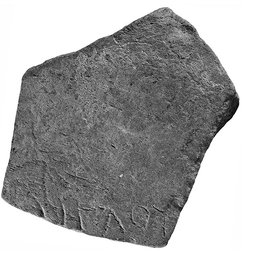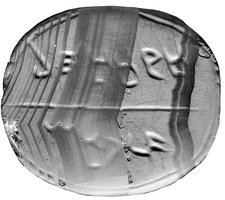I . Tel Mikhal
2161 . Greek funerary inscription of Protarchis daughter of Titius, 1-2 c. CE (?)
A funerary cippus of limestone, cylindrical, and molded at the top and bottom. [...] On the upper and lower sides [...] is a square hole for fastening. Three-line Greek inscription, rather carelessly cut (Clermont-Ganneau). Alpha with broken crossbar; classical omega .
Meas.: h 58 cm (Clermont-Ganneau).
Findspot: Tel Mikhal? (rumored; cf. comm. below).
Good Protarchis daughter of Titius, farewell.
Comm.: The texts of this stone and no. 2162 are taken from Clermont-Ganneaus report and drawings. He saw them in the collection of the Russian archimandrite in Jaffa and was told that they came from a spot on the coast 24 miles north of Jaffa, yet he suspected that they came from Cyprus. Klein included both in his corpus, Frey (CIJ) did not; there is nothing to suggest that either was Jewish. The fact that the present text, on a column, would have been displayed outside and not in a burial cave argues further against a Jewish designation. Similarly, there is nothing to mark either inscription as Christian. Both have the classical omega (and no. 2162 has the quadrilateral sigma ) found in 1-2 c. inscriptions in Palestine and Syria (J. Kloppenborg Verbin, JJS 51/52, 2000, 275; DGI 894 Table 1).
 (Klein:
(Klein:  ) is a rare feminine form of the common male name Protarchus (e.g., SEG 9, 181, 1-2 c. from Cyrene). Titius was a Roman nomen gentile. No connection with the Syrian legate Marcus Titius (ca. 13-10 BCE, cf. PIR2 T 261) should be supposed.
) is a rare feminine form of the common male name Protarchus (e.g., SEG 9, 181, 1-2 c. from Cyrene). Titius was a Roman nomen gentile. No connection with the Syrian legate Marcus Titius (ca. 13-10 BCE, cf. PIR2 T 261) should be supposed.
Bibl.: Clermont-Ganneau, ARP II 149f. no. 1 (ed. pr.). Euting 687 no. 93; Klein, JPCI no. 148.
Photo: Clermont-Ganneau, ARP II 149 (dr.).
JJP
2162 . Greek funerary inscription for Eisidote (daughter) of Ariston, 1-2 c. CE (?)
A large slab of limestone, broken at the bottom, moulded in the upper part, the base a little wider than the top. Three lines of Greek, quadrilateral sigma , classical omega (a). Above the name of the deceased the funeral cry  occurs again, scratched in graffito. (b) (Clermont-Ganneau).
occurs again, scratched in graffito. (b) (Clermont-Ganneau).
Meas.: h 77, w 30, d 6 cm (Clermont-Ganneau).
Findspot: Tel Mikhal? (rumored; cf. comm. no. 2161).
- (a) Good Eisidote (daughter) of Ariston, farewell.
- (b) Farewell.
Comm.: See comm. to no. 2161. Inscription (b) was scratched perhaps spontaneously at the burial as a sign of mourning.  , a common theophoric name (LGPN 1, 2a, 3b, 5a, s.v.).
, a common theophoric name (LGPN 1, 2a, 3b, 5a, s.v.).
Bibl.: Clermont-Ganneau, ARP II 149f. no. 2 (ed. pr.). Euting 687 no. 92; C. Schick, PEQ 25, 1893, 286-93 at 287-91 fig. 5; A. Murray, ibid., 300 ad fig. 5; Klein, JPCI no. 138.
Photo: Clermont-Ganneau, ARP II 150 (dr.).
JJP
2163 . Graffito on pottery, 1st half of 1 c. BCE
Five remaining letters of an inscription incised after firing on a sherd of a jar or jug. Meas.: h 5.5, w ca. 5 cm; letters 0.5-0.7 cm.
Findspot: In the fill of a room in the Hellenistic fortress in Tel Mikhal; Stratum IIIb, Locus 687, Basket 5138/1 (Herzog).
Pres. loc.: Beth Shemesh, IAA inv. no. 1987-292. Autopsy: 16 August 2012.
... of Reglus(?) ...
Comm.: The first letter is broken at the bottom, but two parallel lines are visible, thus it may be an eta . If - is the end of the word, as it seems to be, then it may be an owners mark in the genitive. The name offered here is the only fitting option in the LGPN. Many other reconstructions maybe offered.
Bibl.: Z. Herzog, in: id. - G. Rapp Jr. - O. Negbi, Excavations at Tel Michal - Israel, 1989, 165ff. fig. 12,10.
Photo: IAA.
AE
2164 . Seal with Aramaic inscription, ca. 4 c. BCE
An oval seal of white agate, perforated, single line border and field divider, two inscribed registers (Avigad 99). Meas.: h 1.4, w 1.2, d 0.8 cm.
Findspot: Between Tel Aviv and Herzliya, near Tel Mikhal. According to Avigad - Sass, this seal was found in a tomb during N. Avigads excavations at the site (according to Naveh it was found on the shore near Herzliya).
Pres. loc.: IAA inv. no. 1963-469.
Translit.: lnn bn | kwy
(Belonging) to anan son of kwy.
Comm.: The script on this seal is in Hebrew letters of the 4 c. BCE, and, according to Avigad - Sass, the script resembles that of a contemporary bulla from Samaria (Avigad - Sass no. 419), belonging to [Yesha] yahu(?) son of [Sn]bl governor of Samaria. This may indicate its Samarian provenance (cf. Cross 23). The owner of the seal was a certain anan son of kwy. The name kwy has been interpreted as deriving from the root kh (to look out) in the qal pattern (Avigad 535; cf. the Biblical name kyh [1 Chr 8,10]). This name appears in the Wadi Daliyeh papyri (Eshel 1994, 49), in Aramaic ostracon 8 from Arad (Naveh 1981, 156f.) and on an Aramaic ostracon from Idumaea (ISAP 2493), dated to year 10, probably of Artaxerxes III, corresponding to 349/348 BCE.

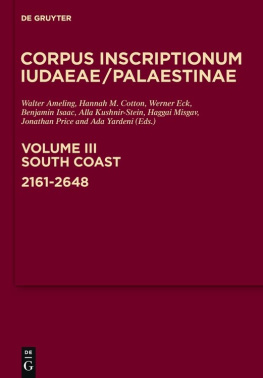
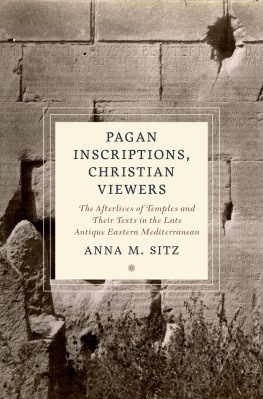
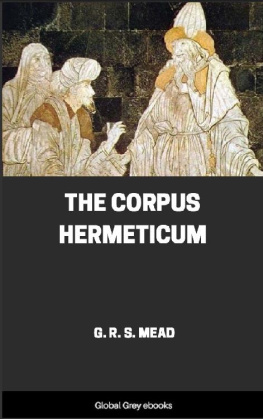
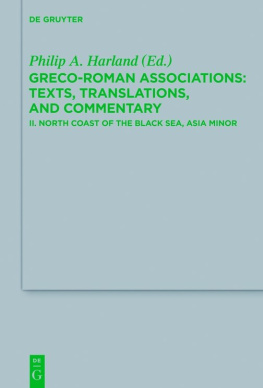

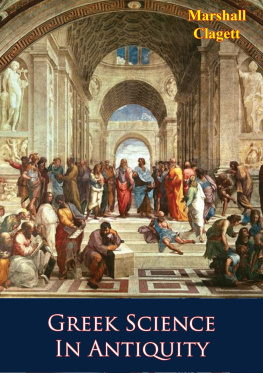
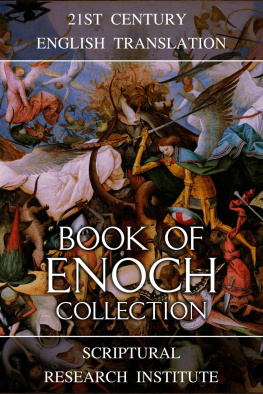

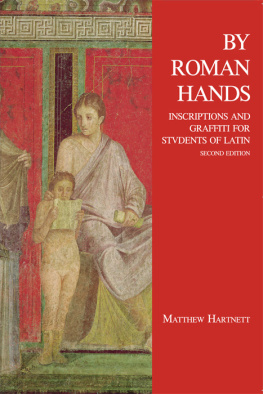
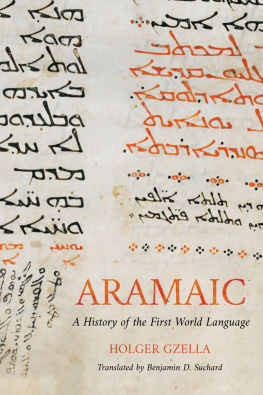
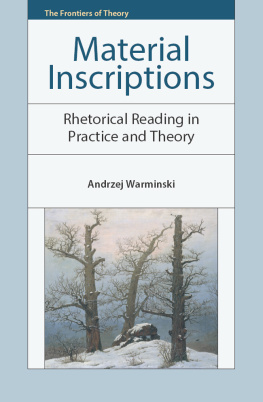
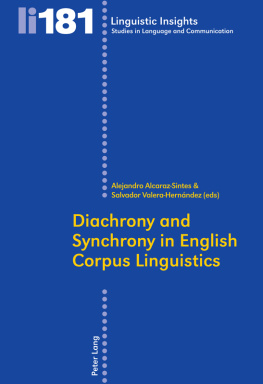
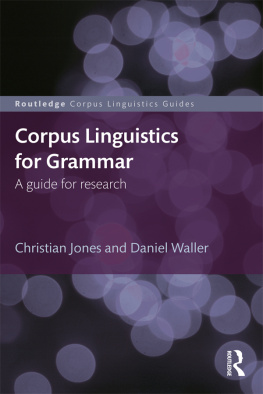
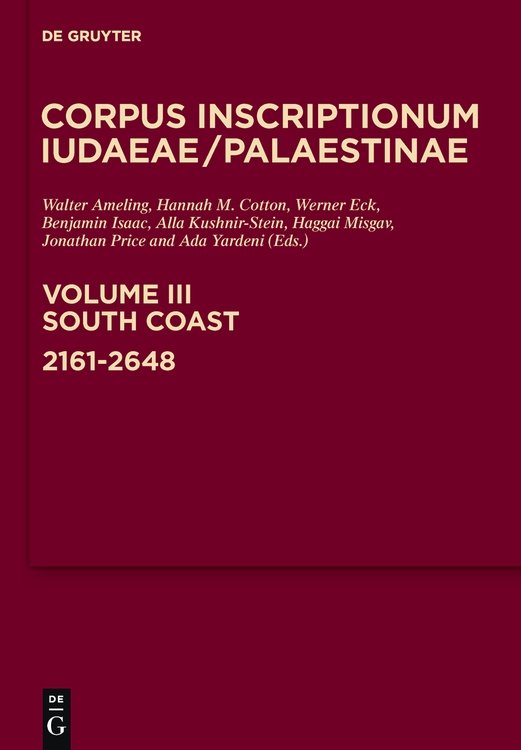
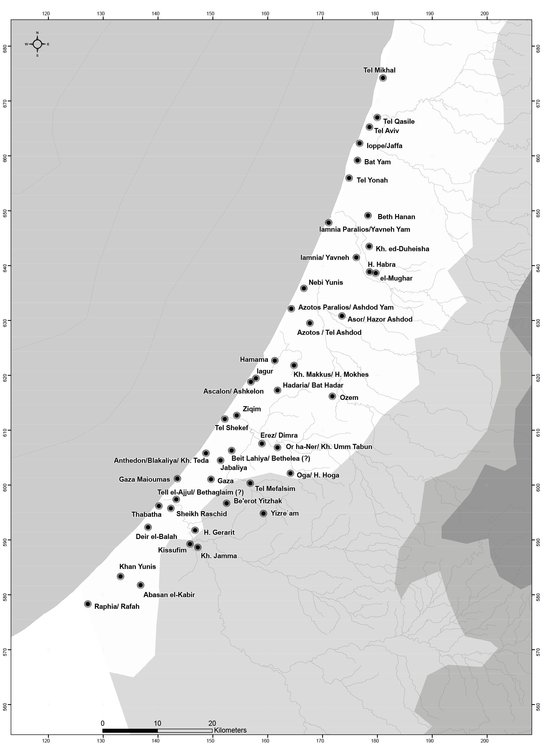
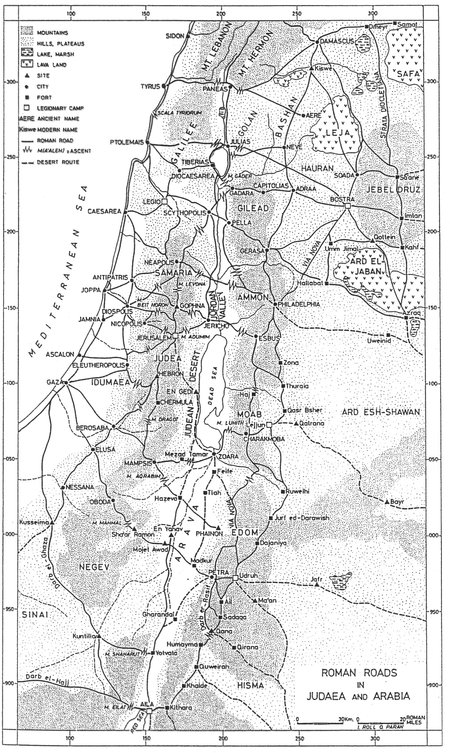
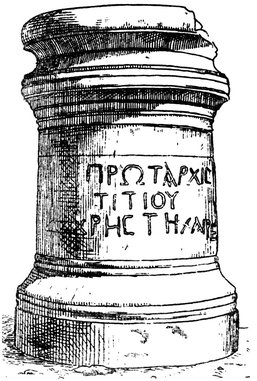
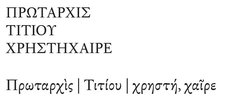
 (Klein:
(Klein:  ) is a rare feminine form of the common male name Protarchus (e.g., SEG 9, 181, 1-2 c. from Cyrene). Titius was a Roman nomen gentile. No connection with the Syrian legate Marcus Titius (ca. 13-10 BCE, cf. PIR2 T 261) should be supposed.
) is a rare feminine form of the common male name Protarchus (e.g., SEG 9, 181, 1-2 c. from Cyrene). Titius was a Roman nomen gentile. No connection with the Syrian legate Marcus Titius (ca. 13-10 BCE, cf. PIR2 T 261) should be supposed. occurs again, scratched in graffito. (b) (Clermont-Ganneau).
occurs again, scratched in graffito. (b) (Clermont-Ganneau).

 , a common theophoric name (LGPN 1, 2a, 3b, 5a, s.v.).
, a common theophoric name (LGPN 1, 2a, 3b, 5a, s.v.).